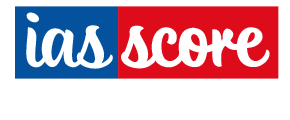


Instruction:
- There will be 2 questions carrying 10 marks each. Write your answers in 150 words
- Any page left blank in the answer-book must be crossed out clearly.
- Evaluated Copy will be re-uploaded on the same page after 2 days of uploading the copy.
- Discussion of the question and one to one answer improvement session of evaluated copies will be conducted through Telegram with concerned faculty. You will be informed via mail or SMS or Telegram for the discussion.
Question #1. Wealth of linguistic richness exists outside what are known as the official languages of India. Analyze the statement showing how extremely rich is India in terms of linguistic diversity.
Question #2. Though the caste system has been relatively weakened and the patterns of discrimination have come down, it still remains to a considerable extent and has even taken newer forms in contemporary times. Discuss.
(Examiner will pay special attention to the candidate's grasp of his/her material, its relevance to the subject chosen, and to his/ her ability to think constructively and to present his/her ideas concisely, logically and effectively).
STEPS & INSTRUCTIONS for uploading the answers
Step 1 - The Question for the day is provided below these instructions. It will be available at 7:00 AM.
Step 2 - Uploading of Answers : Write the answer in A4 Sheet leaving proper margins for comments and feedback and upload the PDF in MY ACCOUNT section. Click on the option of SUBMIT COPY to upload the PDF.
Step 3 - Deadline for Uploading Answers: The students shall upload their answers by 7:00 PM in the evening same day. The first 50 copies will be evaluated.
Step 4 - Feedback : Mentors will give their feedback for the answers uploaded. For more personalised feedback, join our telegram channel by clicking on the link https://t.me/mains_answer_writing_cse . A one-to-one session will be conducted with the faculty after copy evaluation in 72 Hrs.
Model Answer
Question #1. Wealth of linguistic richness exists outside what are known as the official languages of India. Analyze the statement showing how extremely rich is India in terms of linguistic diversity.
Approach
- Introduce the language and India’s multi lingualism.
- Mention in detail about India’s linguistic diversity.
- Mention the threat to the diversity
- Conclude with the gist of your answer
Hints:
Language is the most vital tool for flourishing the culture. India has become a land of many tongues and has been called “as a tower of veritable languages” or a “Museum of languages”. India’s multi culturism is preserved through multilingualism. India is a big country and it packs in an astonishing array of languages. Over 1600 languages were thought to be spoken in the subcontinent and it’s unlikely that any other country in the world matches India for linguistic diversity.
India’s linguistic diversity
- While Hindi is the official language of the central government in India, with English as a provisional official sub-language, individual state legislatures can adopt any regional language as the official language of that state.
- The most comprehensive data on languages was collected at the time of 1961 census of India. According to these census figures there were 187 languages spoken by different sections of our society. Out of these, as many as 94 languages are spoken by less than 10,000 persons each and 23 languages together account for 77 percent of the total population of the country.
- Out of these numerous languages, 22 are recognized as national languages of the country as they are included in the eighth schedule of the constitution. These languages are: Hindi, Bengali, Assamese, Kannada, Sanskrit, Kashmiri, Malayalam, Marathi, Oriya, Urdu, Konkani, Sindhi, Tamil, Telegu, Manipuri, Nepali, Punjabi and Gujarati, Maithili, Bodo, Dogri, Santhali. Hindi is the official language of India and it is understood by the largest number of people in the country.
- Other languages are recognized as ‘regional’ ones, meaning they are not widely spoken across the subcontinent but have a regional base, and often a moderate-sized population of speakers. Examples include Rajasthani, Bhili, and Tulu.
Threat to the diversity
- Lingual diversity of India has been misappropriated by regional political parties which lead to issues of increased regionalism and parochialism, violence with linguistic minorities, demand for separate states and erosion of national feeling.
- Imposition of any language over this linguistic heritage will definitely destroy our cultural and historical melodies.
- Less widely spoken languages are generally called ‘minority languages’, some of them in fragile states of survival. India is losing languages faster than any other nation on earth, with up to 30% under real threat.
Conclusion
Languages are more than a medium of expressing ourselves. They carry cultural and historical accomplishments of a society with them. Although, there should be a language which people can understand across the length and width of the country, but that acquaintance should be spread through knowledge and literacy. Linguistic diversity adds new shades of cultural richness in our social life and any attempt to destroy it will destroy that beauty of this part of the land.
Question #2. Though the caste system has been relatively weakened and the patterns of discrimination have come down, it still remains to a considerable extent and has even taken newer forms in contemporary times. Discuss.
Approach:
- Introduce about caste system
- Explain how caste system has weakened in its traditional form
- Discuss new forms of caste based discrimination
- Conclude with the way forward
Hints:
Caste system is a framework for social stratification, uniquely observed in Hindu social order which divides the people into four varnas and numerous Jatis. It is characterized by endogamy, hereditary transmission of a style of life which often includes an occupation, ritual status in a hierarchy, and customary social interaction and exclusion based on cultural notions of purity and pollution.
Weakening of traditional form of caste system
- The defining features of caste system have been segmental division of society rigid hierarchy, civil & religious disabilities and privileges, lack of unrestricted choice of occupation, restriction on food, drinks & social intercourse and endogamy.
- Social reform movements: Pre-independence period as well as after freedom, a number of anti caste discrimination movements took place in India led by freedom fighters, social reformers and progressive organisations. Satyashodhak Movement by Jyotirao Phule, Justice Party Movement started under the leadership of Dr. T.M Nair, P. Tyagaraja Chetti and C.N Mudalair in 1916, Self-Respect Movement started under the leadership of EV Ramaswami Naicker or Periyar in 1925, Depressed Classes Movement (Mahar Movement) under the leadership of BR Ambedkar are some of the important social reform movements.
- Urbanisation: Cities provide the communities greater mobility and variety where relationships do not get established either merely on the basis of caste but on reciprocal social and economic ties. Urban-dwellers do not strictly conform to caste norms. There is a change in commensal relations, marital relations, social relations, as well as in occupational relations. A person in a city derives his status not only from caste but also from other considerations.
- Constitutional safeguards: Fundamental rights gives the right to equality, prohibition against discrimination, abolition of untouchability to individuals , while allowing the state to take affirmative action for social justice by providing reservation in government jobs and education for backward castes. DPSP in article 46 requires the State to promote the educational and economic interests of the weaker sections of the people, and, in particular, of the Scheduled Castes and the Scheduled Tribes, and protect them from social injustice and all forms of exploitation.
- Due to increase in education and awareness along with economic development, urbanisation and growth in literacy, the old ideas of the caste system are breaking down.
New forms of caste system and discrimination
- Caste as a group is leveraged for political mobilisation, factionalism and polarisation for vested interests by political class. Caste based political parties, caste related considerations in fielding candidates and the resulting identity politics is a manifestation of caste system taking a political shape. On the other hand, politics has also given voice and representation to the lower castes through vote bank and reservations in Panchayats, state legislature and Lok Sabha.
- While caste identity might seem to be fading in public lives, it is very much alive in private lives. Ritual practices related to caste are practiced within the precincts of home although workplaces may have become secular.
- Despite the ‘Prohibition of Employment as Manual Scavengers and their Rehabilitation Act’, scavenging still remains a caste driven occupation whereby it is mainly the Dalits who work as sanitation workers - as manual scavengers, cleaners of drains, as garbage collectors and sweepers of roads.
- Similarly, urban centres promise equality and openness, but caste continues to dictate employment and restricts residential choices of lower castes. The 2011 Census data suggest that 1) the percentage of Dalits living in slums is more and, in most cases twice their percentage in the total urban population; and 2) a majority of urban Dalits are slum-dwellers. The 2011 Census showed that 12.6% of the population in urban India were Dalits. However, Dalits constituted 20.3% of the slum population.
- Of late, dominant groups like Jats, Patidars, Gujjars, Marathas, etc have begun to demand reservations for them. The academic Christophe Jaffrelot argues that dominant caste demands for reservations would increase so long as economic growth failed to create jobs.
- The India Human Development Survey (IHDS) conducted across various states in the country revealed that only 5 percent couples had an inter-caste marriage, thus highlighting unresponsive attitude towards caste affiliation.
Conclusion:
The demise of the caste system is not imminent and caste fault lines remain strong in social and political life. However, along with stricter implementation of constitutional safeguards and legal provisions, the attitudes of individuals and communities should be nudged so as to put an end to the age old tradition of caste based inequalities and prejudices.
GS Society is increasingly becoming an area of significance in the mains examination. Micro unit analysis of the syllabus by themes provides a structural framework to the subject. It is with earnest hope that this approach has been meticulously designed to take the journey from concept to question with effortless ease.
Segment 1 titled 'Integrative elements of the Indian Society' is a broad theme that incorporates the section 1 on Salient Features of the Indian Society/ Unity in Diversity. In this segment emphasis is laid on the binding thread that renders India a sui generis character. Social groups such as races, religions, tribes, classes are observed through their composition and relevance. Where social institutions such as Caste system, Family and kinship patterns are observed through change orientation. Understanding the key demands of the syllabus and aligning it with the key demands of the question is the way secret sauce to conquering GS Society.
Topics to be read:


